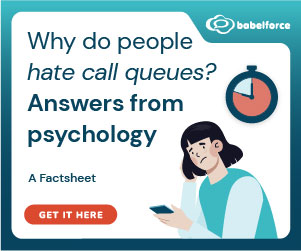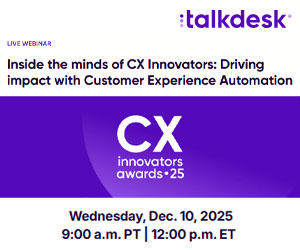If you’ve read our other content on the importance of customer experience, you will know that, currently, it is more influential than ever on businesses and their bottom line.
Organisations that want to secure new customers, retain their loyalty, and maintain a positive public reputation in their marketplace need to prioritise customer experience in order to remain competitive in the long run.
And with today’s highly digitised landscape sprawling across all manner of devices and apps, the way to provide the experience your customers expect and crave is by embracing the world of omnichannel.
There are 5 key pillars to delivering a textbook omnichannel experience to your customers.
If one is missing, the whole structure will topple.
But together, they will keep your business standing firmly above the competition.
1. Authentic Knowledge of Your Audience
There’s a reason we’ve chosen to use the word ‘authentic’ here.
A lot of businesses still make the mistake of assuming what their customer wants from their experience with them.
But in today’s data-driven world, where detailed customer information is everywhere, why would you shape your service delivery around an assumption?
Contact centre technology can enable you to continuously monitor how customer queries are handled and resolved across all channels, and generate detailed reports on every exchange.
Perhaps your customer satisfaction over the phone is high, but your web chat function is a persistent source of frustration.
Reporting will allow you to identify any weak links in the chain and strengthen them.
BONUS TIP
Wherever possible, invite anonymous feedback from your customers.
Feedback can provide insights that you won’t find in a metrics report.
This is truly invaluable if you want honest opinions on how your customer experience strategy is working, and how it makes your customers feel about your company.
2. Effective Customer Journey Mapping
An omnichannel experience is not just about spreading your business communications across as many platforms as possible.
It’s about knowing where your customers are likely to be, and where they are likely to go, then shaping their individual experience around that.
All while ensuring they don’t run into any frustrations along the way.
If you have multiple different target customers and audience demographics, you need to map a customer journey for each one.
For example, some customers might wish to contact you via social media and complete a purchase without ever having to walk into a store.
Others may prefer to speak to someone on the phone first and arrange an appointment or product demo in person.
It’s all about identifying your specific customer demographics, studying their typical interactions with you, and mapping them out definitively.
Then, when a similar customer crosses your path, you can accommodate them with a responsive journey that is as holistic and seamless as they want it to be.
3. Dedicated Support Across Every Channel
Offering support across all your channels doesn’t mean having to suddenly hire dozens of new employees.
In fact, effective omnichannel support has far more to do with systems than it does staffing.
By investing in the right contact centre technology, you can unify all of your channels of contact, enabling your customer service staff to monitor and manage all inbound and outbound activity from one singular platform.
This means a customer can start a conversation with one member of your team via Facebook Messenger, then call the business to be greeted by the same agent on the other end of the line.
In other words, contact centre technology enables your team to easily deliver a consistent and seamless omnichannel experience.
4. Proactive User Engagement
Customer experience is often discussed from the perspective of inbound enquiries – i.e. when a customer reaches out to a business directly with a query.
But it is important not to overlook the power of outbound customer engagement.
In the digital era of subscription culture and online memberships, you don’t have to wait for the customer to come to you.
Competitions, rewards, discounts, loyalty schemes, and other personalised offers can be perfectly tailored to appeal to the interests of individual customers, based on their personal data and transaction history.
(The Starbucks rewards app is a textbook example of this in action, and it works seamlessly from laptop, to mobile, to store.)
Is a loyal customer’s birthday approaching? Why not offer them a special one-time discount on their favourite product.
Proactive omnichannel engagement carries an incredibly high success rate and comes with the added bonus of deepening the relationships with the customer.
5. Leading-Edge Contact Centre Technology
Omnichannel is by no means a new term.
Many businesses and decision-makers know of its benefits, but simply don’t have the right technology to facilitate it.
To offer a seamless, joined-up experience for the customer, you need technology that can join up your internal operations, and help them work seamlessly.
Opt for a leading-edge contact centre system, and you build and develop an exceptional omnichannel customer experience, thanks to features such as…
- An all-in-one customer interface: integrate all channels for an at-a-glance view of all inbound and outbound activity as it happens
- Advanced workflow designer: manage inbound and outbound enquiries flexibly across all your channels, and redistribute workloads to respond to real-time demand
- Detailed customer reporting: monitor enquiries at all times and glean detailed data on everything from call resolution rates to common points of frustration
- CRM integration: access all your existing and historic customer data and leverage it seamlessly through the platform, no hassle required.
Author: Guest Author
Published On: 10th May 2022
Read more about - Guest Blogs, NFON





































